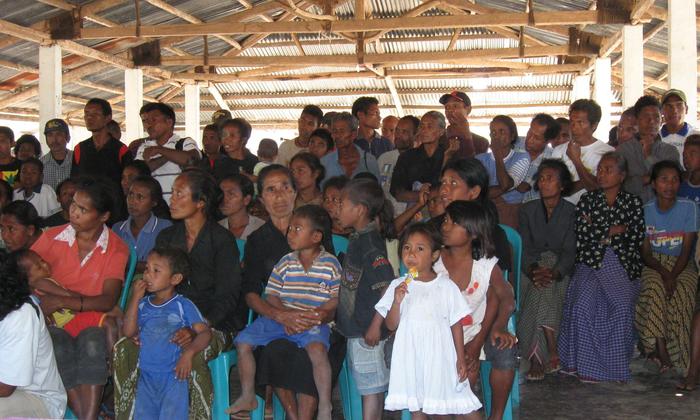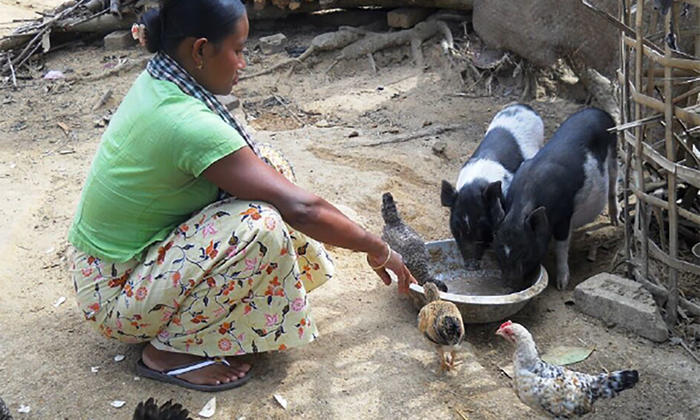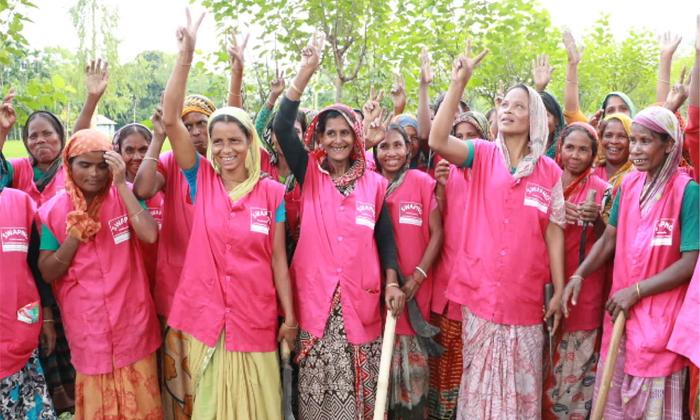The programme aims to Support the development and improvement of nutrition and food security and also supports capacity development of local institutions, organizations and policy makers
Case study
Integrated Nutrition and Food Security Strategies for Children and Vulnerable Groups in Viet Nam

SDGs ADDRESSED
This case study is based on lessons from the joint programme, “Integrated nutrition and food security strategies for children and vulnerable Groups in Viet Nam.”
Read more
Chapters
Project Partners



1. SUMMARY
Viet Nam has made great progress in terms of economic growth over the past two decades, however, nutrition and food security remain key development challenges still to overcome. The joint programme supported the development and implementation of integrated approaches to food security and nutrition to achieve the targets set in the National Nutrition Strategy and National Food Security.

Demonstration of organic fertilizer preparation.
2. SITUATION
Almost 2.1 million children under five in Viet Nam are considered too short for their age or stunted. Lao Cai and Ninh Thuan have high percentages of ethnic minorities provinces and also suffer poverty rates around double the national average. The incidence of stunting is above 40% in Lao Cai, located in the Northeastern Region, and 30% in Ninh Thuan, located in the South Central Coastal Region. Over 50% of children from the H’Mong ethnic minority group, predominantly found in Lao Cai and 40% of children from the Rag Lei ethnic minority group in Ninh Thuan, are also stunted compared to 23% of Kinh children, (the majority ethnic group).

Programme beneficiaries.
3. STRATEGY
The joint programme focused on fostering political support to scale up nutrition and built on the experience of the MDG-F-supported, “Joint Programme on Nutrition and Food Security Strategies in Viet Nam.” It promoted best practices, including adoption of effective laws and policies, and development of action plans focused on mutual accountability.
4. RESULTS AND IMPACT
Policy was strengthened on food security and nutrition through the approval and implementation of decree 100 on marketing of breast milk substitutes, national decree 09 on mandatory food fortification (salt for human consumption and food processing, wheat flour, and cooking oil), and Ministry of Health’s guidelines on Early Essential Newborn Care. Other accomplishments included the restructuring of a proposal on the rice sector, which was endorsed in June 2016 and disseminated for nationwide application, and annual nutrition profiles at national and sub-regional levels and for 63 provinces, which were developed and published on the National Institute of Nutrition’s website.
Over the duration of the programme, training through the Farmer Field Schools benefited some 5,466 farmers (2,969 women and 2,497 men). Local government officials in seven programme communes in the four targeted districts of the Ninh Thuan and Lao Cai provinces improved their knowledge and skills in seven household models of crop, livestock and aquaculture production. The Ministry of Health approved technical guidelines on early detection and early treatment of children with severe acute malnutrition (SAM), along with national guidelines on diagnosis and early treatment of SAM. These guidelines were used in pilot communes in Ninh Thuan and scaled up to 334 communes of the 28 districts most affected by the drought crisis in 2016, benefiting some 7,000 SAM children in the affected provinces.
Community Child Feeding Clubs targeting women from households in each respective village proved successful and focused on making the best use of available foods, providing guidance on exclusive breastfeeding and complementary feeding, as well as hygiene and sanitation. Clubs met once per week at the home of the village head with members exchanging foodstuffs to improve nutritional diversity. They also had access to grinding equipment at the club location in order to make fortified flour. Differing from those organized by other entities, they as they enjoyed the endorsement and participation of local and provincial government.

5. CHALLENGES
Challenges included improving intersectorial policy coordination, availability of data and monitoring of nutrition indicators, difficulties in identifying local experts in gender and measuring the broader impact of programme interventions on policies and planning der and measuring the broader impact of programme interventions on policies and planning.

Training materials and supplies displayed at Community Child Feeding Club.
6. LESSONS LEARNED
- By continuing to work with local partners, interventions including the Farmer Field Schools and Community Child Feeding Clubs could be further scaled up. Apart from the targeting mothers, other caregivers in the communities could also benefit from participation.
- Information is empowering. Generating reliable data on key health indicators, quantifying improvements in household income and sharing this information with the beneficiaries allowed them to see the achievements they made through their participation in the joint programme.
7. SUSTAINABILITY AND POTENTIAL FOR REPLICATION
In the targeted local communities, positive spillover effects were observed from programme interventions. Neighboring households that did not participate in the programme but seeing the results, also replicated the techniques and models the practiced by the programme’s beneficiaries. Where beneficiaries had limited Vietnamese language skills, local partners were grateful for the development of training materials, both on the health and the agricultural side in local languages, which helped ensure sustainability and replication of results.
The baseline and endline surveys were important to demonstrating the impact of the joint programme’s interventions. Effective communication of the results to the provincial government and donors in Lao Cai province resulted in the decision by the Provincial People Committee of Lao Cai to replicate the model in 22 additional communes with similar social-economic conditions funded by the local government budget. The Government of the Republic of Korea also provided financial support to expand the model to three other locations.

Los hijos de una familia beneficiaria juegan frente a una escuela de campo para agricultores.







